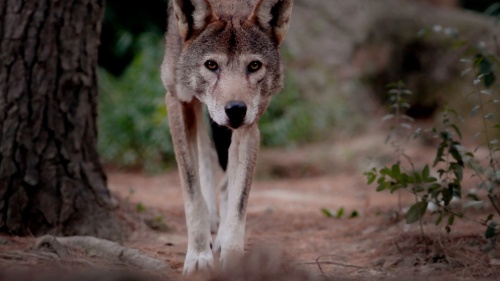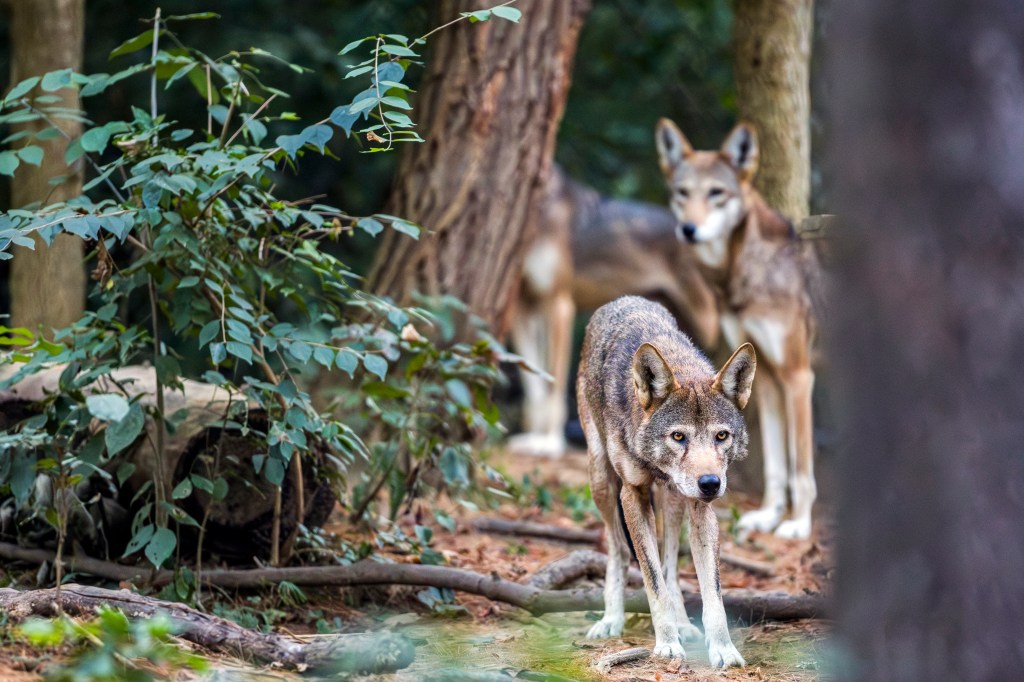
Wary wolves, slimy salamanders and plenty of pollinators are thriving at the Oglebay Good Zoo in West Virginia, thanks to conservation efforts and private partnerships.
Williams’ sponsorship of zoo programs is helping bring several species back from the brink of extinction.
Back to the Wild
You don’t often think of zoos as transitional housing, but that’s exactly what the Good Zoo hopes for red wolves, Eastern Hellbender salamanders and Monarch butterflies. The goal is to repopulate the wild with these vulnerable species by breeding, rearing and feeding them.
“We want to save wild animals and wild spaces,” said zoo director Joe Greathouse. “Our goal is to either bring endangered species back to where they’re not going to be an endangered species anymore, or to prevent species from becoming endangered.”
Red Wolf Repopulation
With only about two dozen red wolves left in the wild, zoos like Oglebay are the last chance to save these canids that once roamed from New York south to Texas.
The zoo now houses six red wolves, including a family unit that includes two males born at the zoo in 2023. Two other females are kept in a separate enclosure for future breeding.
“Any addition to the species is fantastic and when reintroduced to the wild, will add to the genetic pool,” said zoo curator Mindy White. “It’s unbelievable to be involved in something where we have animals we could possibly see in the wild one day.”
There are currently approximately 280 red wolves managed at Red Wolf SAFE facilities like Oglebay Good Zoo. Through these programs, red wolves are gradually being returned to their native habitats, giving them a chance to thrive once again.
“It’s very important to get these guys back out there,” White said. “They are apex predators and ecosystems need that for balance.”
Raising Hellbenders
Hellbenders, sometimes referred to by playful nicknames like “snot otter” and “old lasagna sides” are serious business at the zoo, which has been highly successful in reintroducing these creatures into their natural habitats.
“Hellbenders have been around since the time of the dinosaurs and they’re a keystone species within our streams and rivers,” said Greathouse. “Because they breathe through their skin, they are like the canary in the coal mine when if comes to fresh water. If there’s pollution, we see the population start to decline.”
The Oglebay Good Zoo made history in 2007 as the first zoo in the world to successfully hatch Eastern hellbender eggs in human care.
“We raise them for approximately four years and put them back in the wild when they are large enough to be safe from most predators,” Greathouse said. “We’ve reintroduced more than 1,000 hellbenders into three different streams and rivers in West Virginia.”
However, it’s unlikely you’ll ever see one in the wild. Although they are North America’s largest salamander, they spend their lives under water, hiding under rock slabs and boulders.
Monarchs on the Move
The zoo’s pollinator garden was abuzz with bees and butterflies this summer.
This garden serves as a crucial stop for local and migrating pollinators, providing them with a place to eat, lay eggs and develop into adulthood.
That’s particularly important for the monarch population, which has decreased by about 90% in the Eastern U.S. due to a lack of food sources.
“We were able to find a good bit of monarch caterpillars this summer, which is great and has a lot to do with the native plants like milkweed in the garden,” said associate zoo curator Courtney Welsh.
The zoo also participates in Project Monarch Watch. Partnering with citizen scientists from the West Virginia Master Naturalist Program, they’ve helped rear, tag and release nearly 2,000 monarch butterflies.
Partnering for Protection
Greathouse said the Wheeling, W.V., zoo is one of only a dozen self-sustaining accredited zoos in the nation, relying on private dollars and not tax funding.
“Corporate support like we receive from Williams helps us meet our conservation mission, helps us develop the facilities so we can provide these animals with the best wellbeing possible.”
Williams senior operations manager Erika Baldauff lives near the zoo and participated in a Hellbender release last spring.
“This place is amazing,” she said. “It’s a living classroom and treasure to our community, and just really a place where our values come to life. I’m proud to work for a company that supports conservation efforts. Together we are building a sustainable legacy for future generations.”
